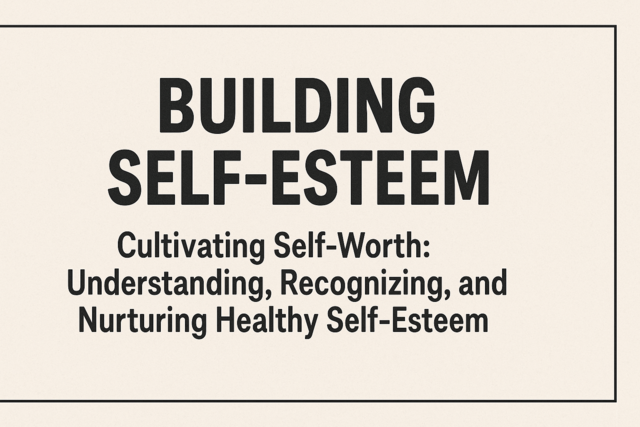Welcome to this article on defense of self and others in the context of workplace violence. We will look in this article at reaction, recovery, and training. Let's get started.
Introduction
It is unfortunate that we must in our society deal with the possibility of workplace violence. Here are some general guidelines that can help you defend yourself, others, and your organization.
1. Screen your applicants to help avoid workplace violence. Ask applicants for references that are personal and professional. Ask yourself is an applicant appears stable. Always have a face to face interview to look at the temperament of an individual
2. Write a policy concerning workplace violence. Make the policy clear and tough. Make this document separate from others so the message is clear about the seriousness of workplace violence.
3. Put together a team to address crisis management. This group can help before an incident occurs and if needed afterward. You should include security personnel, legal staff, and HR. Senior management should also be included.
4. Provide training to supervisors and receptionists. These people may be among the first to notice potential problems and who might be at risk.
5. Communicate clearly about your policy. Make sure all employees know about the policy. Reinforce the message with email, newsletters, and face to face meetings. Employees should know you have a zero tolerance policy. Employees should know when to report concern and when to call 911.
Protect yourself and others by knowing warning signs
Some people can show warning signs that can lead you to think they could become violent at the workplace. Here are some of the signs.
1. an interest in weapons
2. substance abuse
3. stress
4. poor personal hygiene
5. changes in personality
6. a history of violence
7. isolation
8. poor productivity
Protect yourself and others after an event
If there is a workplace violence event, you could find these symptoms at your organization.
- Loss of productivity
-
Increase in employee turnover
-
Absenteeism grows
-
Business is interrupted
-
Insurance premium rates go up
-
Workers' compensation claims increase
Here are examples of what you can do to protect yourself and others after an event.
1. Get out of harm's way.
2. Be sure you evacuate an area that is harmful. All employees and visitors should do this first.
3. Inform law enforcement of the incident.
4. Provide emergency medical care if needed.
5. Keep everyone away from the site until police allow reentry.
6. Work with HR to schedule and attend debriefing sessions.
During a debriefing session here is what you can expect.
1. Education
2. Communication
3. Preparation
Concerning education, you will get information about the incident. This can decrease rumors and help you focus on what happened. Concerning communication, you will get a chance to vent your feelings concerning the traumatic experience that happened. This can help reduce anxiety. Concerning preparation, you can understand better what can happen next. You may need to talk with police during an investigation so now you can prepare for that.
To help individuals cope with workplace violence, the organization should have in place a way to work with media to get out the message. A spokesperson for the organization should handle this.
More about survival, readiness, and response
When we think of survival, we should consider several factors.
-
Be aware of the possibility of workplace violence
-
Know prevention and intervention strategies
-
Plan in advance
-
Prepare for incidents
-
Know how to respond
These factors can help you stay safe and survive an incidence of workplace violence. You may have to take responsibility for your own survival until law enforcement arrives. A mind set for survival can help.
Here is what can go into such a mind set.
1. Be aware
2. Be prepared
3. Rehearse and plan
When we say be aware we mean you should know that workplace violence can happen to anyone. It can be at any level of the organization and any type of organization. You should also be aware that a problem can occur when there are verbal outbursts and of course if you hear gun shots.
We we say be prepared we mean you take responsibility for your own survival. You should imagine what you would do to protect yourself if a shooter comes into the vicinity of where you work. This mind set will help you survive and plan.
When we say rehearse and plan we mean that you imagine yourself evacuating the scene. You look at where the exit routes are. You are aware of safe areas. This means you will be better prepared if there is an incident of workplace violence.
More about responses
If you look at how those who receiving training respond in comparison to those who do not receiving training � you will find some insights of note.
-
Those who do and do not receive training initially respond the same during the first part of an incident � with fear.
-
With no training an individual panics, but with training a person is vigilant and controlled.
-
With training a person recalls what they should do. Then, they act. An untrained person can remain helpless.
If you receive training you can better survive. This is what you can do.
1. Figure out the what is happening during an incident. If this is a shooting incident it may sound different than you expect, given accounts you may have seen in movies or television.
2. Consider your options. This will help you survive.
3. Options can include fleeing to safety or hiding.
4. Continuously look at options as time goes on.
With training your chances of survival improve. You will look to escape. You will leave as soon as possible. Once you are safe you can contact emergency personnel. Consider that in a panic no one has called. Or consider the phone lines could be jammed. Once you connect with an emergency operator, provide this information.
-
Description of incident
-
Location of persons involved
-
Types of weapons
-
Number of weapon
-
Estimate of how many people are in the building
If escape is not possible, here are other options to consider.
-
Find a hiding place. This can mean your survival
-
Lock yourself into an office
-
Remain silent
-
Disperse into various locations
-
Barricade doors
-
Communicate with others as possible
If escape is not possible survival can come if you can neutralize the shooter. Training on how to do this can help. Be prepared for what you have to do.
Surviving a shooting or hostage incident
Both a shooting and a hostage situation are dangerous. Know that with a shooting the shooter either has specific targets in mind or is shooting randomly. With a hostage situation, understand that those who take hostages have a gun but may not use it. With a shooting the shooter is not always restricted. With a hostage situation, the area may be restricted by law enforcement.
A hostage taker can have various motives. One motive could be that they want something such as money and change and once achieved they will flee. Another motive could be to act out emotions due to a loss such as a relationship or job. This hostage taker can act in a way that is more reckless and senseless. They may not have a goal such as money or change. A hostage taker may not want to harm the captive. They may want to keep the captive alive to achieve their goal. Here are more factors to consider.
-
Patience is important as it may take law enforcement staff time to resolve the situation.
-
Remain calm and follow directions.
-
Do not argue or irritate the hostage taker.
-
Do not be too passive. Do not be too aggressive.
Negotiation is typically the preferred method of handling a hostage situation. If you are a captive and sense police want instead to be active shooters do all you can to help the police. They may want to neutralize the situation and ask you to put your arms in the air to show you have no weapon. They may also ask you to drop to the floor to show you have no intention of harming anyone. Do as told. Once the situation is stabilized tell police all you know about how many shooters were involved, the weapons used, and the location of all shooters.
What you should know about defending yourself and others
We should review that to help you and others survive an incident of workplace violence it helps to learn about it, recognize when behavior is of concern, and know that prevention can come when you are aware and take the proper action. We know that violence in the workplace is a problem that is complex and prevalent. If we are involved in an incident it can help, for example, to recognize how you could react to an active shooter versus a hostage taker. You can then better determine what to do. That way your chance of survival gets better.
Data indicates that law enforcement may not arrive in time to help you. You may have to defend yourself and others to survive an incident. It helps if you are aware, prepared, and have rehearsed. You should realize your understanding, approach, and preparation are what count.
More about defense of self and others
Some organizations bring in a consultant on self defense. Management can consider that workplace violence is increasing, and a group cannot afford an incident at their workplace. Consultants help with this concern by providing seminars and workshops addressing how individuals and groups can protect themselves.
Consultants can determine approaches that work best for the group whether it is in health care, customer service, sales, real estate, or shift work � to name a few. Consultants can help make the group more profitable and make employees more loyal to their employer as the employer expresses concern for the safety of their workers. Management feels it cannot afford to have an employee be a victim of workplace violence.
Bringing in a consultant helps a group effectively training all employees in a way that is systematic and practical. Topics covered can include awareness, psychology, how to defuse violent situations, legal aspects, and tools of self protection. Employees benefit from the consultant approach as they:
-
Learn a life long skill � similar to learning about first aid
-
Learn how to help prevent an incident of workplace violence
-
Learn how better to survive an incident
-
Learn safety and self defense skills
-
Become more confident about how to protect themselves
-
Feel safe and less stressed
How self defense training can help
With self defense training an individual and group can stop workplace violence before it starts and help with survival if it does happen. Additional benefits of self defense training include how it helps with creativity and problem solving. The training also helps enhance teamwork and a positive attitude toward the employer. It also helps with morale and employee discipline. Productivity can improve after the training and employees have less apathy and complacency. Here is a list of additional benefits.
-
Employees gain peace of mind
-
Employees feel happier on the job
-
Employees feel more confident
-
Leadership skills grow as does self esteem
-
Problem solving skills increase
With training the work force of an organization develops verbal self defense skills as their interpersonal communication skills improve. Workers can better remain calm under pressure as their concentration and focus improves. The training can also be part of business functions as a team building exercise with employees learning practical skills that benefit themselves and their organization.
With such specific training conducted by experts, employees can feel safer at work. They could feel less stress, become more confident, and become more productive. This can also mean less time off work and less turnover of staff. An organization that bring in such training by experts can address concerns over the growth of workplace violence and the costs an event of workplace violence can bring. You help prevent personnel and financial loss in the future.
A quick review
In this article we looked at defense of self and others in the context of workplace violence. We addressed topics of training, reaction, and recovery. We hope you found the information in this article of value.






























